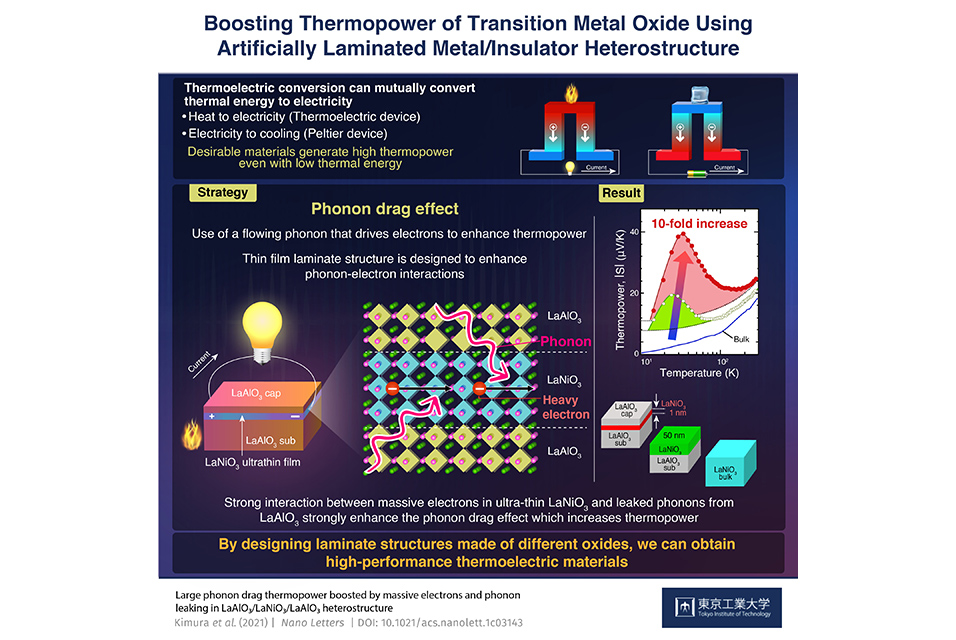TOKYO.- Thermoelectric materials have the ability to generate electricity when a temperature difference is applied to them. Conversely, they can also generate a temperature gradient when current is applied to them. Therefore, these materials are expected to find use as power generators of electronic devices and coolers or heaters of temperature control devices. To develop these applications, a thermoelectric material showing high thermoelectric voltage (called thermopower S), even on applying low thermal energy, is required. However, conventional thermoelectric materials exhibit high conversion efficiency at high temperatures, whereas there are only a few candidates that show high conversion performance at below room temperature.
Recently, a team of researchers from
Tokyo Tech, led by Associate Professor Takayoshi Katase, developed a new method to significantly enhance S at low temperatures. In a recent paper published in Nano Letters, the team reported an unusually large enhancement of S observed in laminate structures made of an ultra-thin film of the transition metal oxide LaNiO3 sandwiched between two insulating layers of LaAlO3.
"We clarified that the unexpected increase in S was not caused by usual thermoelectric phenomenon but by the "phonon-drag effect" arising from the strong interaction of electrons and phonons. If the phonon-drag effect is strong, the flowing phonons can drive the electrons to produce extra thermoelectric voltage when a temperature difference is applied. This phenomenon is not observed in LaNiO3 bulk but appears upon reducing the layer thickness of LaNiO3 film and confining it between insulating LaAlO3 layers," explained Dr. Katase.
By reducing the thickness of LaNiO3 films down to just 1 nm and sandwiching the film between LaAlO3 layers, the team was able to enhance S at least 10-fold. This enhancement was observable for a wide range of temperatures up to 220 K. The experimental analyses revealed that the phonon drag effect originated from enhanced electron-phonon interaction by massive electrons confined in the LaNiO3 layer and the flowing phonons leaking from the upper and lower LaAlO3 layers.
"The findings from this study can be used to explore new high-performance thermoelectric materials by designing the laminate structures of different oxides that can improve energy generation and fuel utilization," concludes Dr. Katase.









